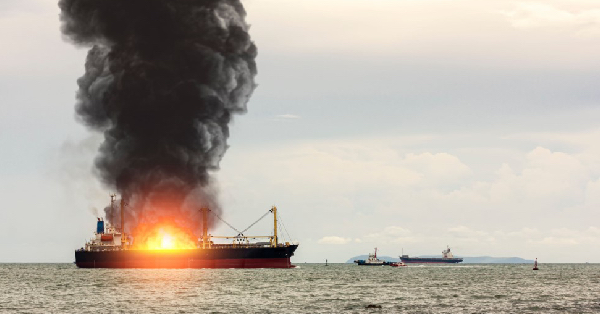The number of incidents that result in fire in cargo holds caused by hot works is not very high, although such cases still happen from time to time. The most common situation is when a shore gang is contracted to cut or weld stoppers, D-rings, or other lashing points on weather deck or tweendeck of the vessel. In such cases the vessel is responsible for arranging a fire watch to monitor hot works and take prompt action in case of fire. Unfortunately, the vessel’s fire watch is not always correctly positioned or properly prepared for hot work. Belated fire watch actions may result in a situation whereas fire cannot be extinguished by own means and shore-based fire brigade assistance will be needed. In a worst-case scenario the entire cargo can be damaged by either fire or the water used for extinguishing the fire.

Simple preventive measures can help owners to avoid a fire and the following should be observed:
- The crew, together with shore contractors, should carefully inspect the area prior to hot works being performed
- In case hot works will be conducted on weather deck or tween deck the cargo beneath should be protected from sparks that may fall through gaps between pontoons of the hatch cover
- Firefighting equipment should be deployed at the place of hot work and in lower compartments
- Permission from local authorities should be obtained before commencement of hot work
- The vessel’s Hot Work Permits form should be filled in by the Chief Officer before hot works start
- A fire watch with VHF radio should be posted at the place of hot work, and in the lower compartment
- Gaps between hatch cover’s pontoons or tweendeck should be closed so that no sparks caused by welding or grinding may penetrate into the lower compartment.
During hot work, heavy smoke can be produced that may also penetrate the lower cargo compartments. The crew must make sure that continuous ventilation of all enclosed areas is properly arranged to have a healthy atmosphere inside the compartment. Atmosphere testing should be performed frequently by trained ship’s personnel.
As charterers might be carriers under the Bills of Lading, the charterers’ supercargo should be requested to check with the crew if all above preventive measures are in place and Hot Work Permit has been issued prior to hot work being performed.
Once hot works are completed, the work area should be monitored for at least 30 minutes or until risk of fire no longer exists. The ship’s Hot Work Permit should contain information about completion of hot work and demobilisation of fire watches.









































